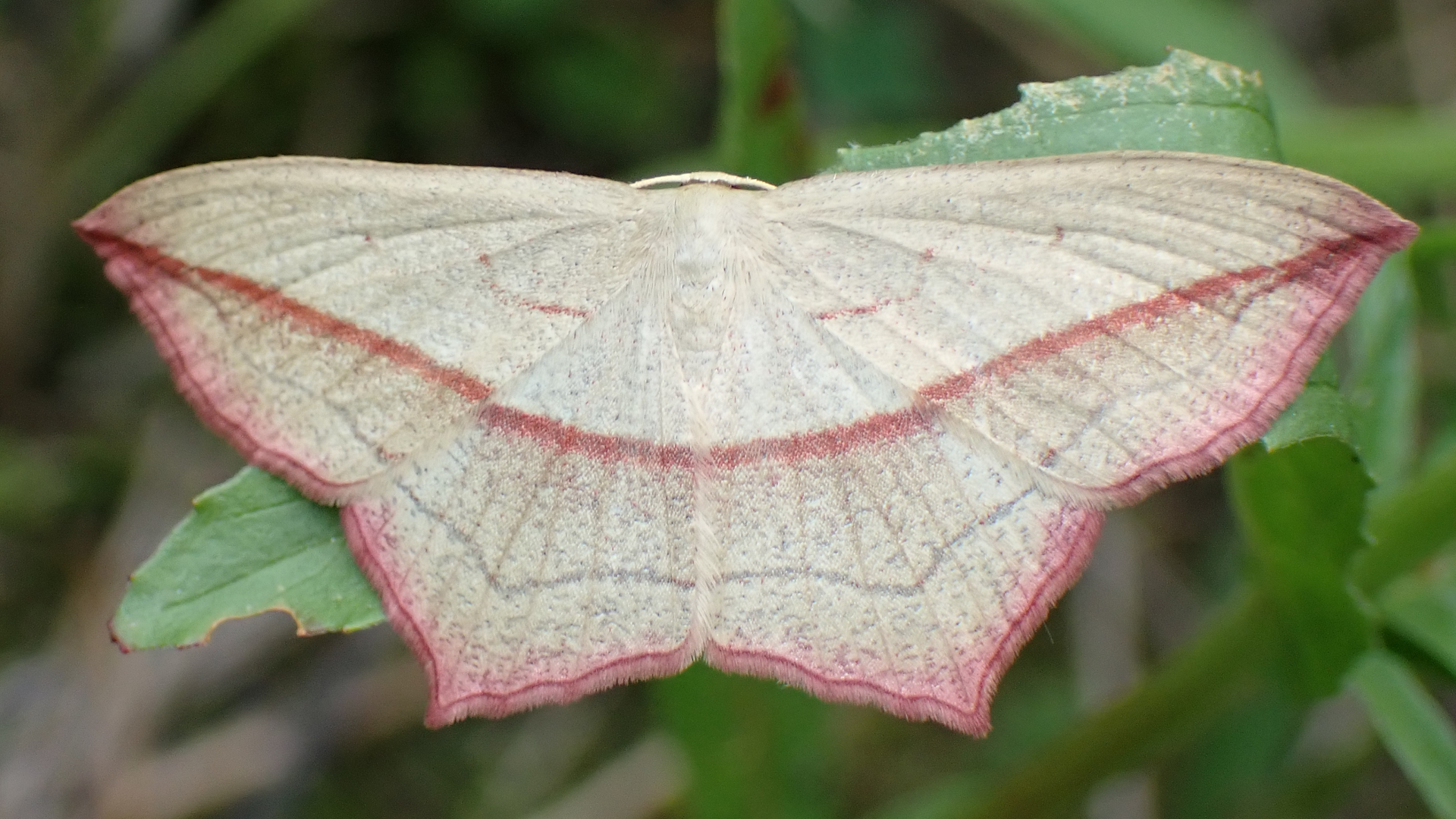Moths are a group of insects that includes all members of the order Lepidoptera that are not butterflies. They are an important part of the food chain providing a vital food source for birds and bats.
70.004
Least Carpet Idaea rusticata
A tiny macro species with a wingspan of about 20mm that flies from June to August. Its larvae can be found on ivy the larval foodplant. This species belongs to the Geometridae, a large family of moths that includes Waves, Carpets, Pugs, Thorns and Emeralds. Most species have broad, rather triangular forewings and light slender bodies. The antennae are never club-shaped. A number of species have females that are unable to fly and need to walk to disperse their eggs.
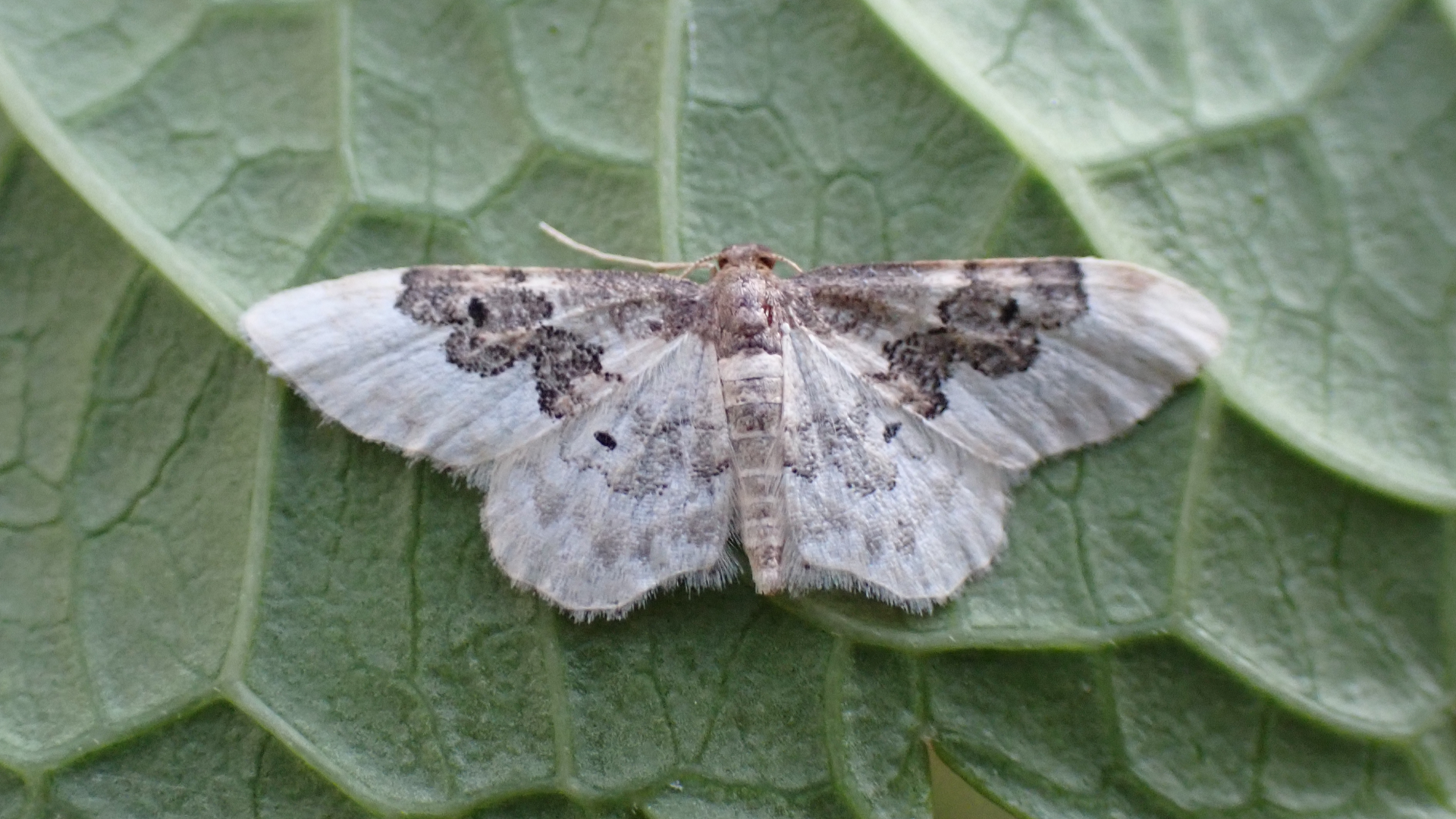
#
70.006
Dwarf Cream Wave Idaea fuscovenosa
Flies in June and July. The larval foodplant is unknown, but in captivity the caterpillars have fed on dandelions, knotgrass and bramble.
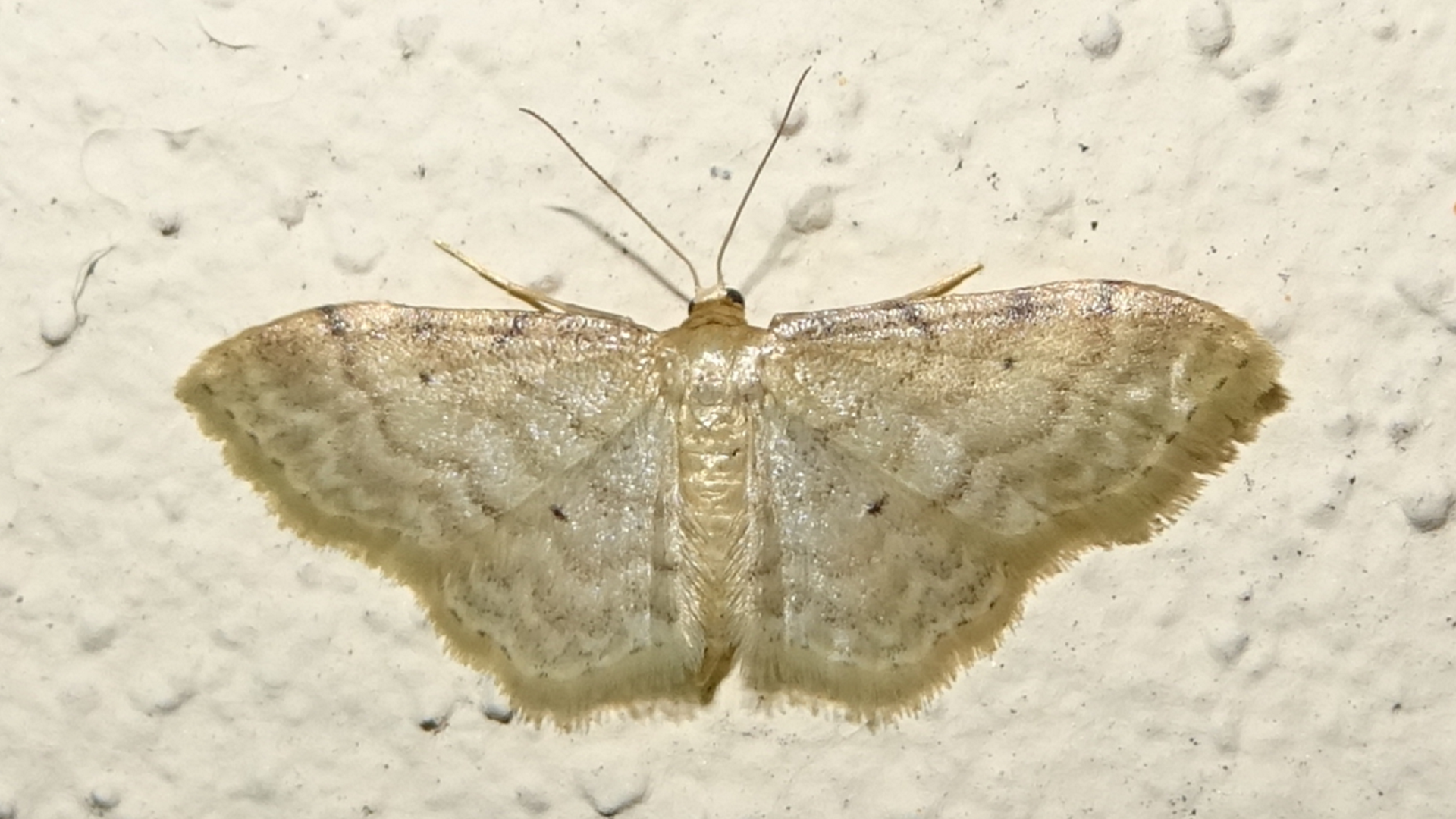
#
70.012
Treble Brown Spot Idaea trigeminata
Flies in May until September in two generations. The larvae feed on various foodplants including Knotgrass and Ivy.

#
70.045
Shaded Broad-bar Scotopteryx chenopodiata
A common moth found throughout the UK in July and August. Vetches and Clover are known larval foodplants. Wingspan up to 30mm.
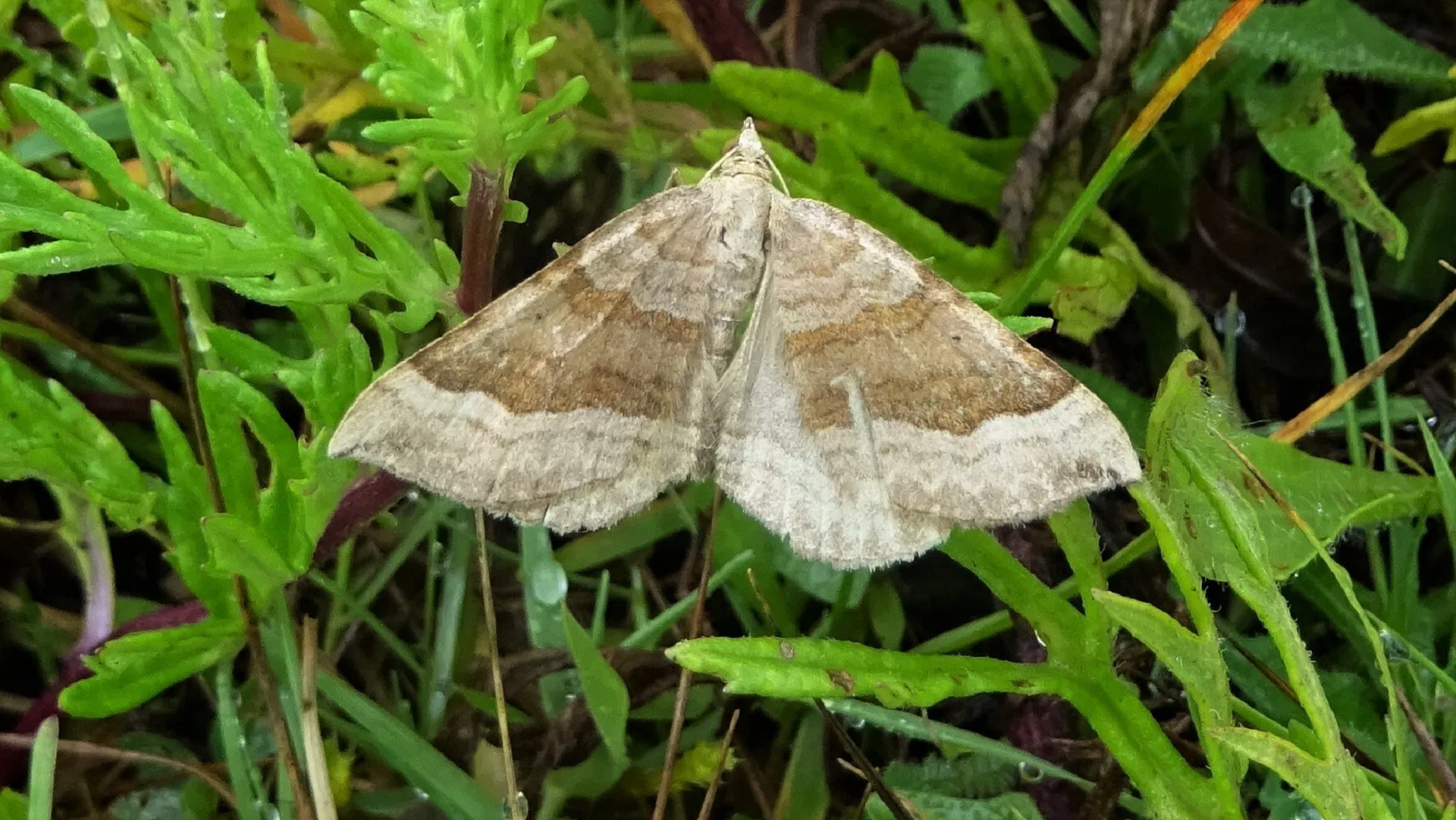
#
70.054
Silver-ground Carpet Xanthorhoe montanata
Can be rather variable, but all forms have a distinctive whitish ground colour. The central band can vary a lot. This species visits herbaceous plants from May to July.
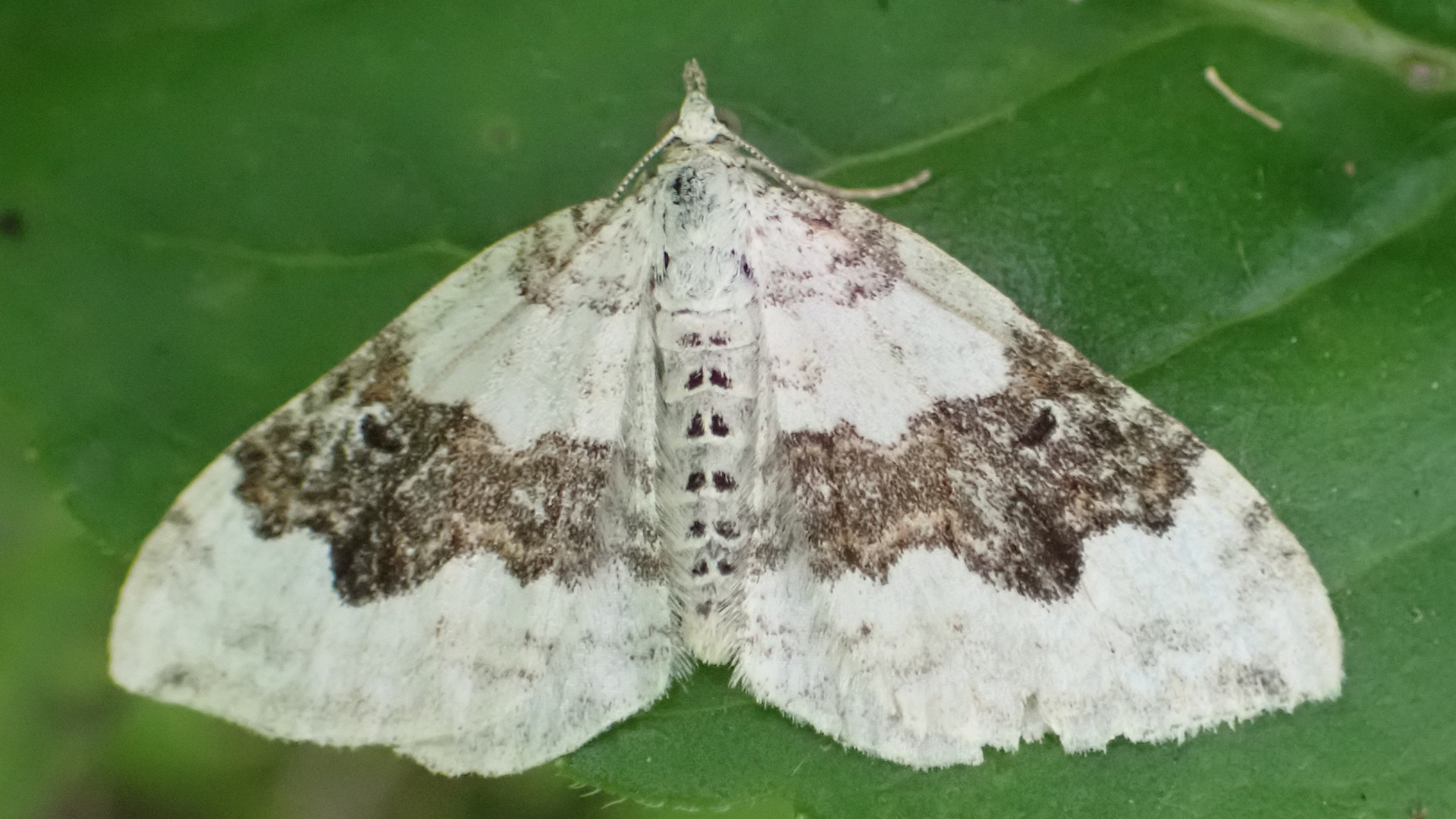
#
70.059
Yellow Shell Camptogramma bilineata
Day-flying moth on the wing from June until August. Colouration and patterning is very variable. Its larvae feed on cleavers and bedstraws.
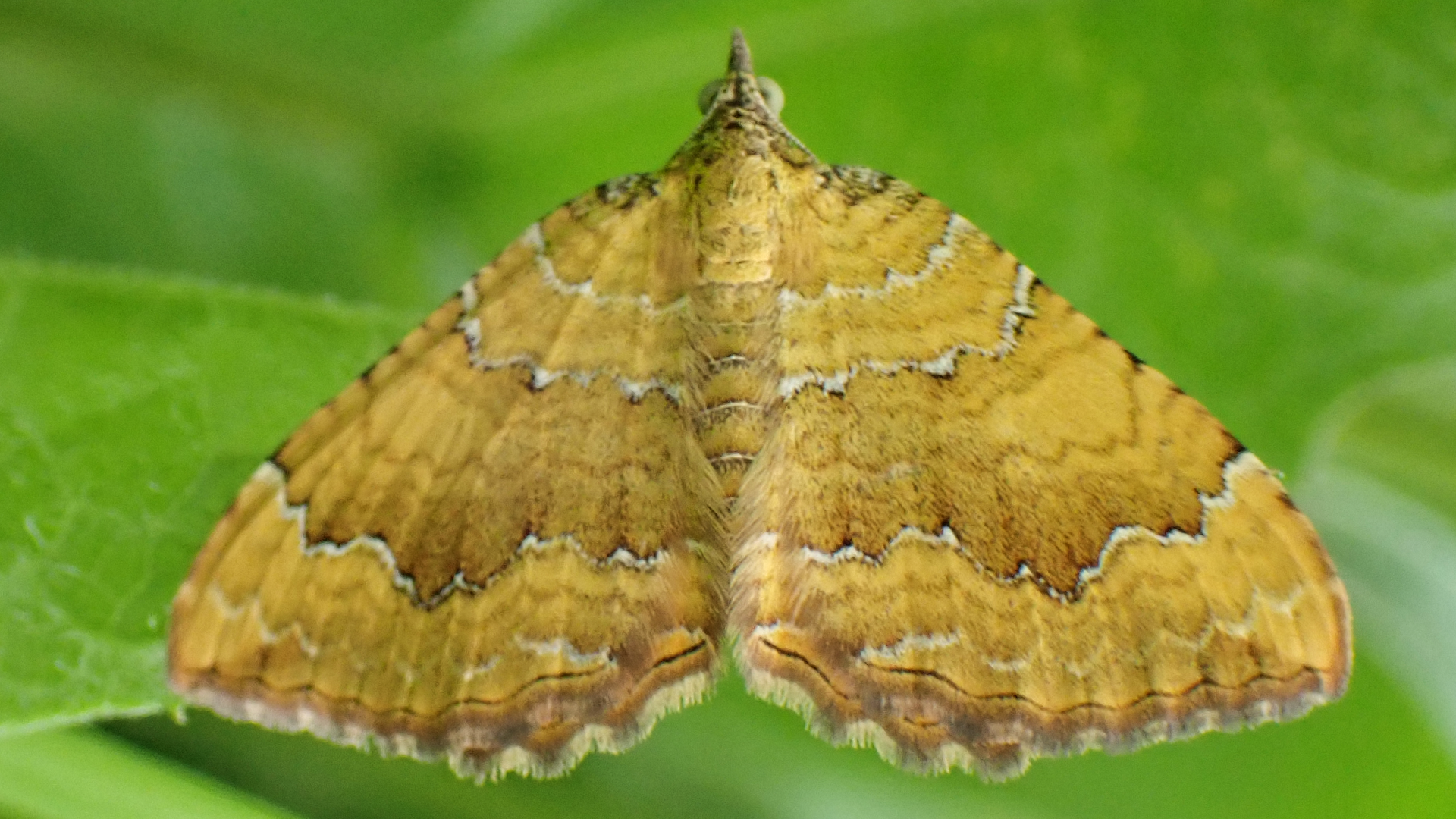

#
70.061
Common Carpet agg. Epirrhoe alternata/rivata
Common Carpet Epirrhoe alternata and Wood Carpet E. rivata look very similar, the latter being slightly larger. Both species feed on bedstraws.
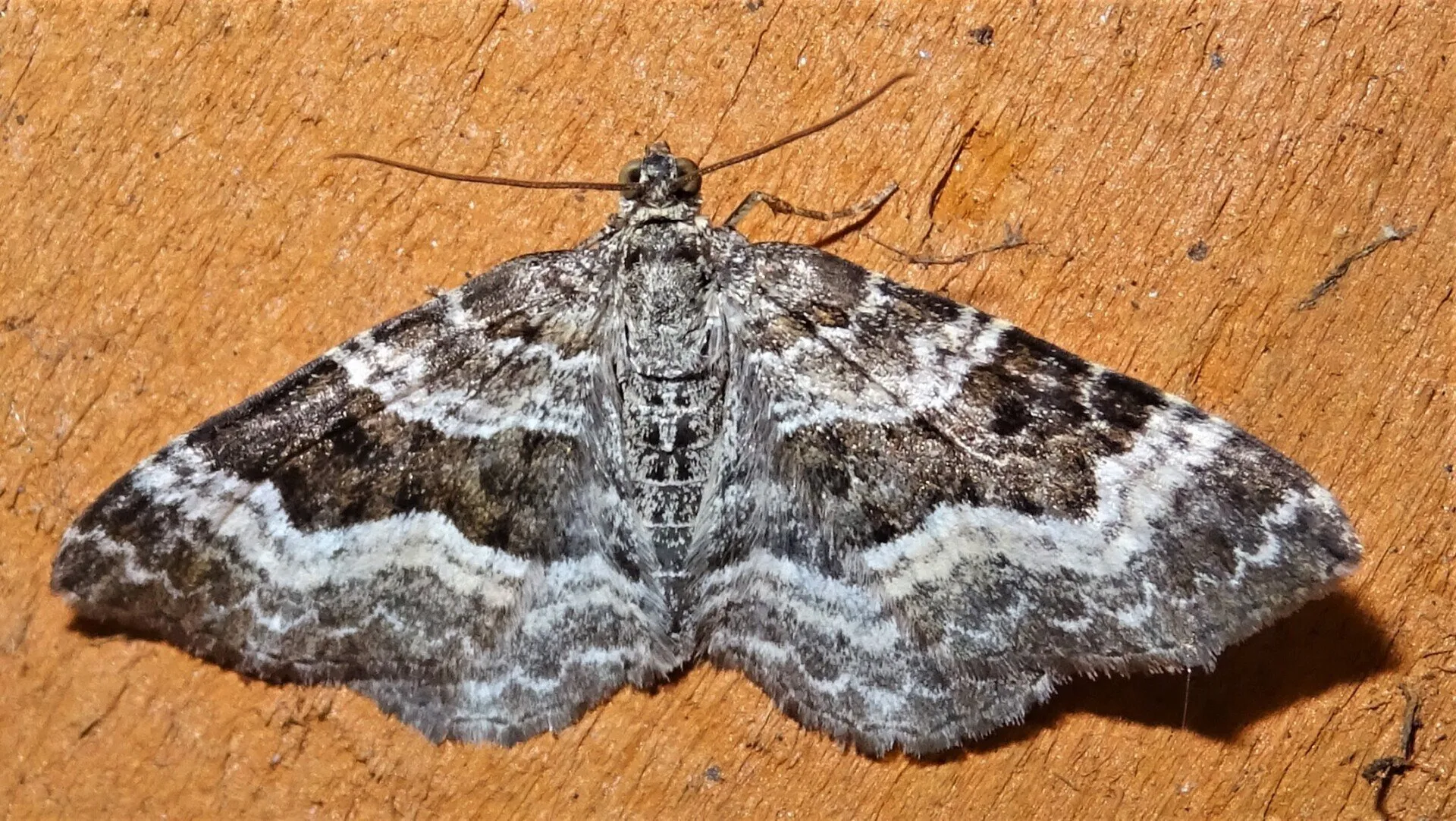
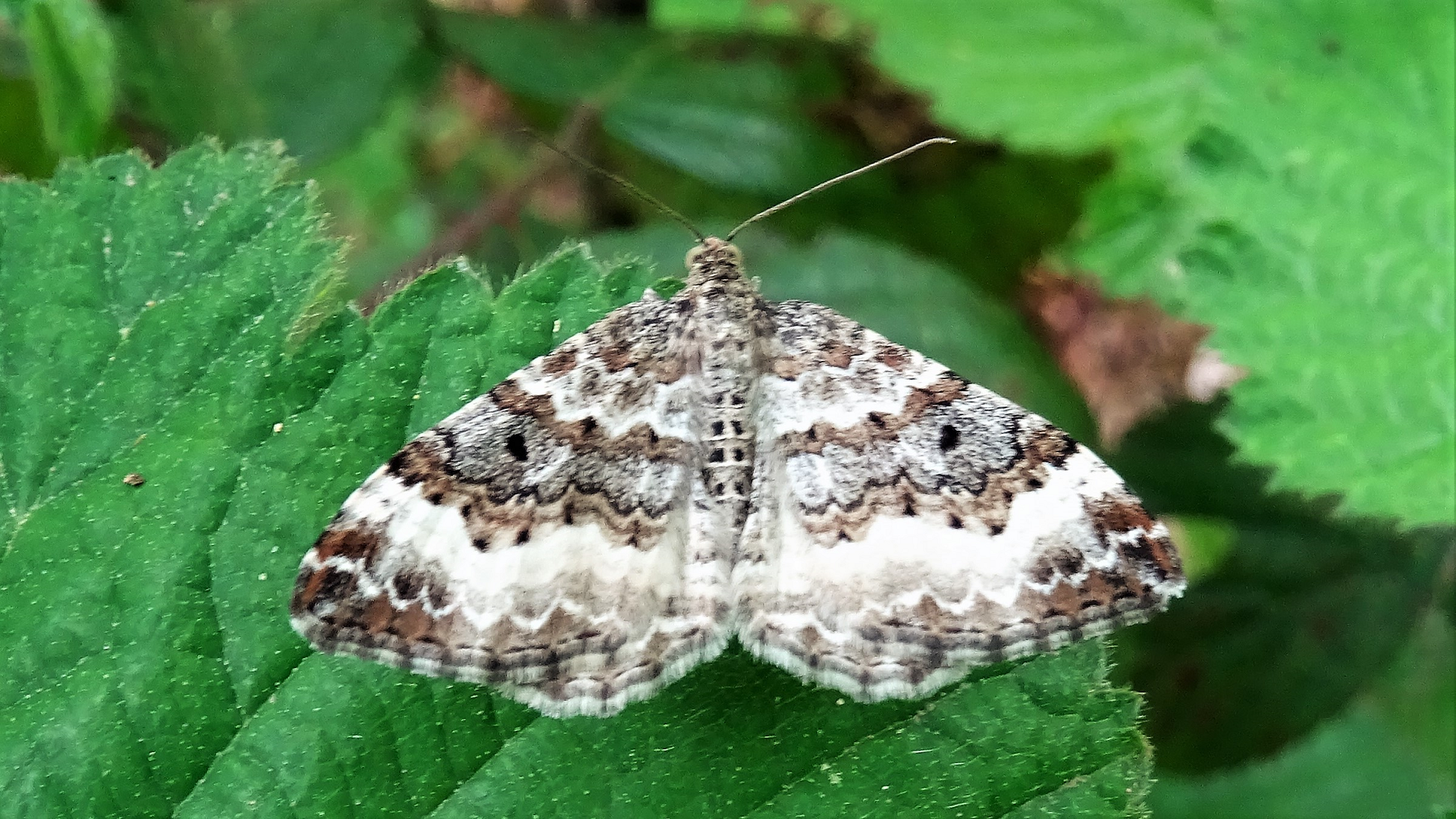
#
70.067
Streamer Anticlea derivata
The Streamer is an attractive springtime moth. It inhabits woodland, scrub and hedgerows. Its larvae feed on dog-rose and other wild roses.
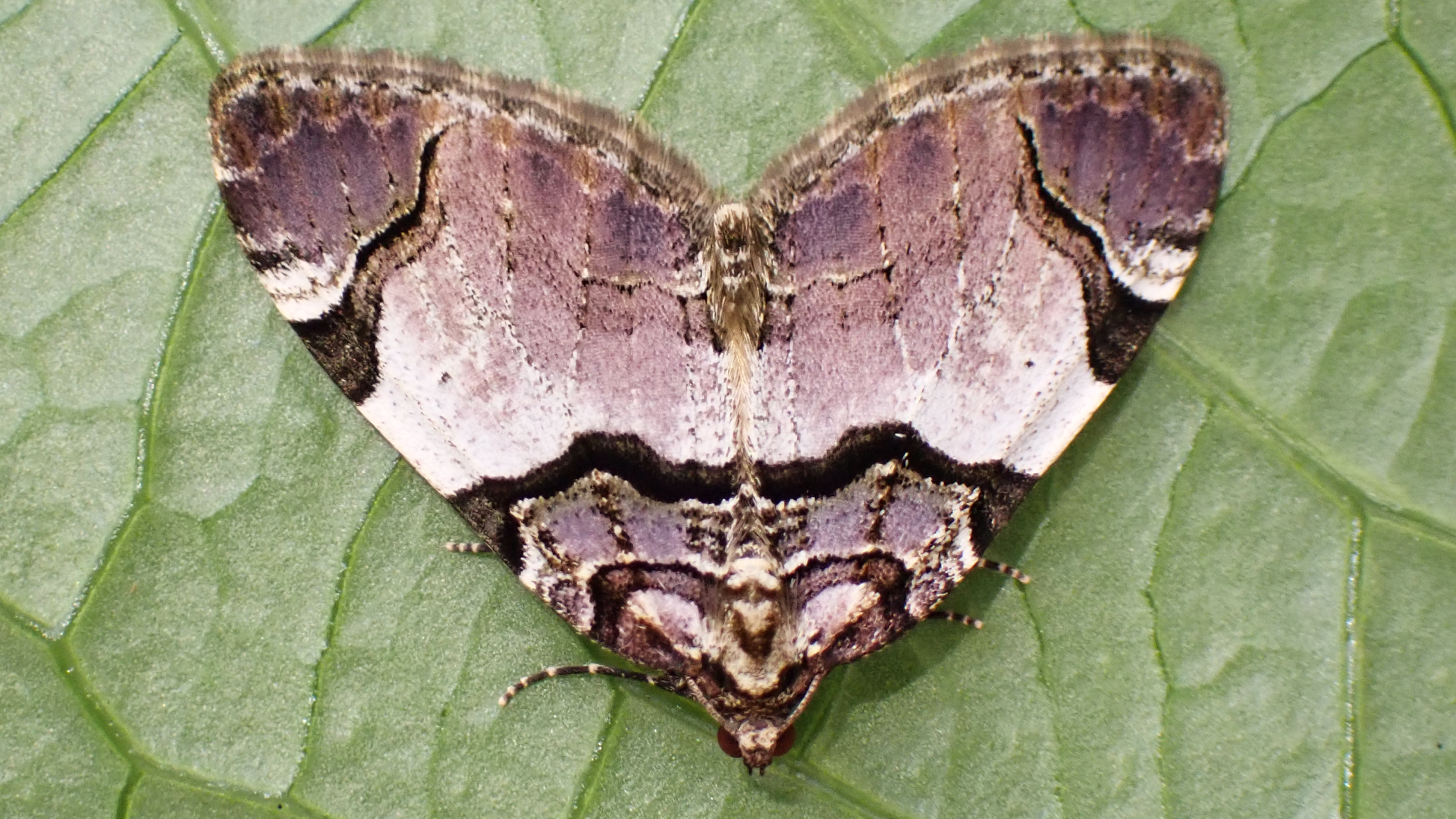
#
70.095
Red-Green Carpet Chloroclysta siterata
The Red-Green Carpet flies from September until November and then again from March until May after hibernation. Mainly a woodland species, its larvae feed on various broadleaved trees.
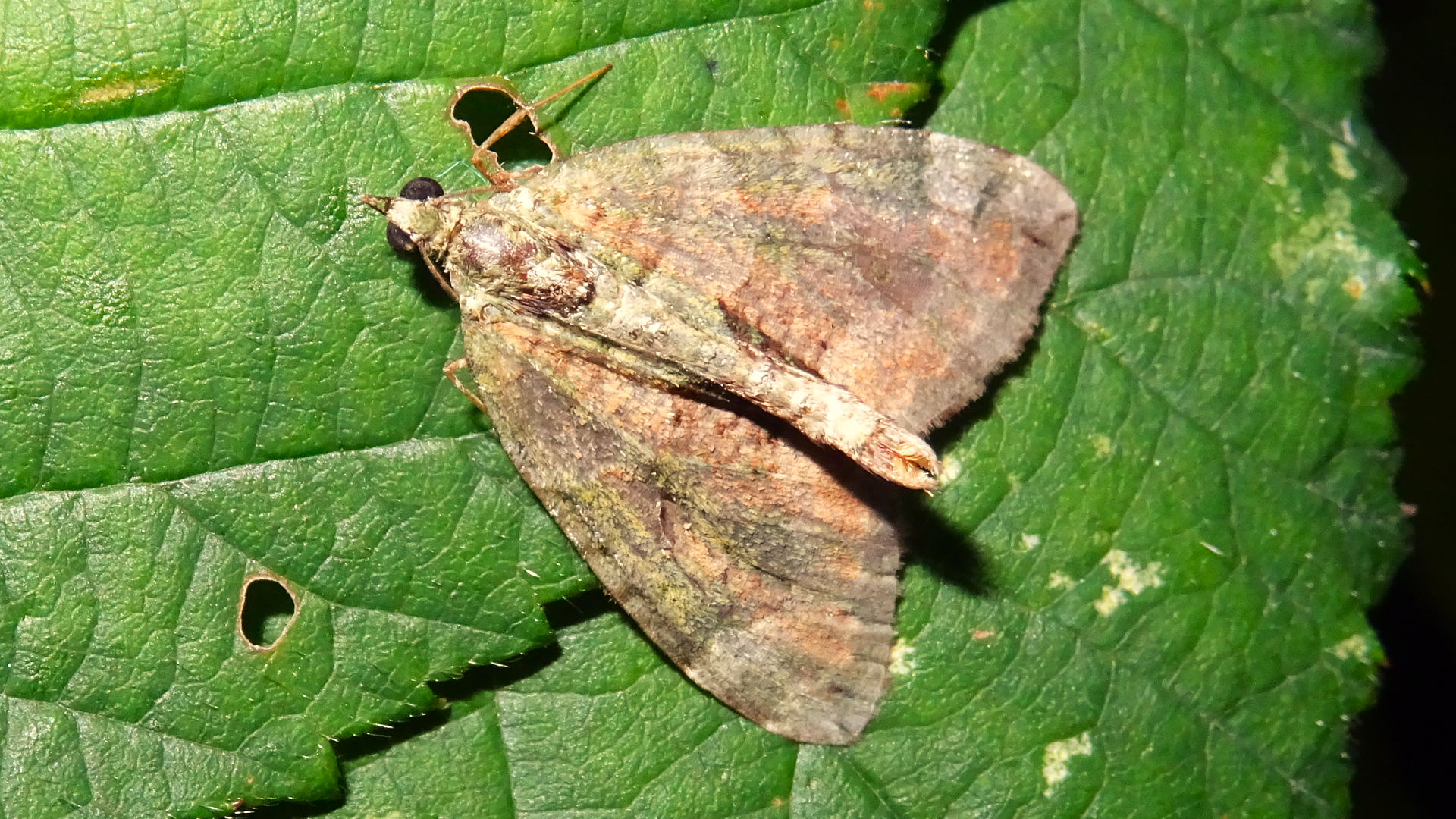
#
70.097
Common Marbled Carpet Dysstroma truncata
A widespread and common species that comes in a range of colour patterns. Its larvae feed on woody plants. There are two generations, one appears in May and June, and the other from August to October.
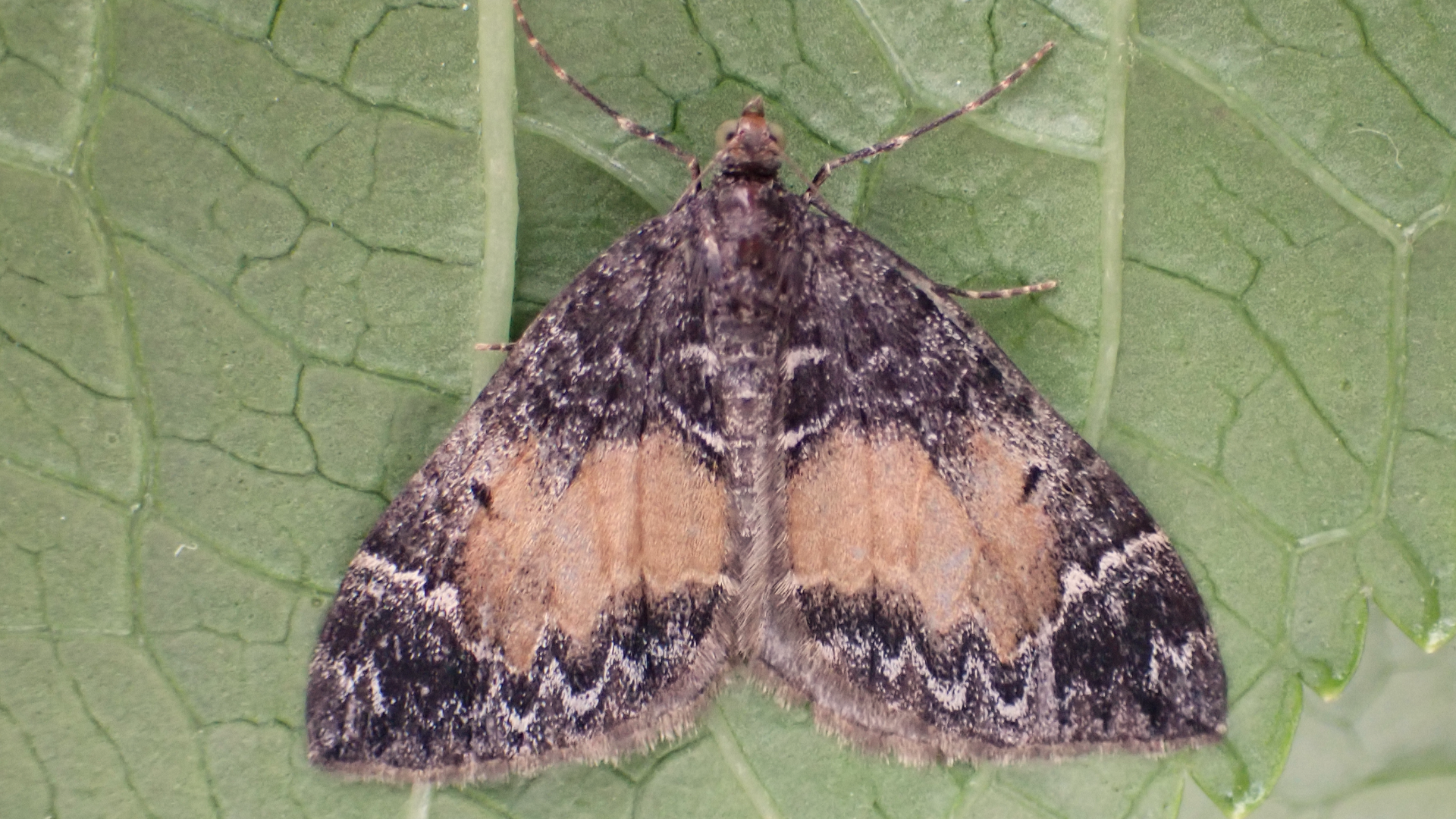
#
70.106
Winter Moth Operophtera brumata
A common sight from November until February resting on tree trunks. Females are almost wingless, and crawl up tree-trunks waiting for males to arrive. The larvae feed on various broadleaved trees.
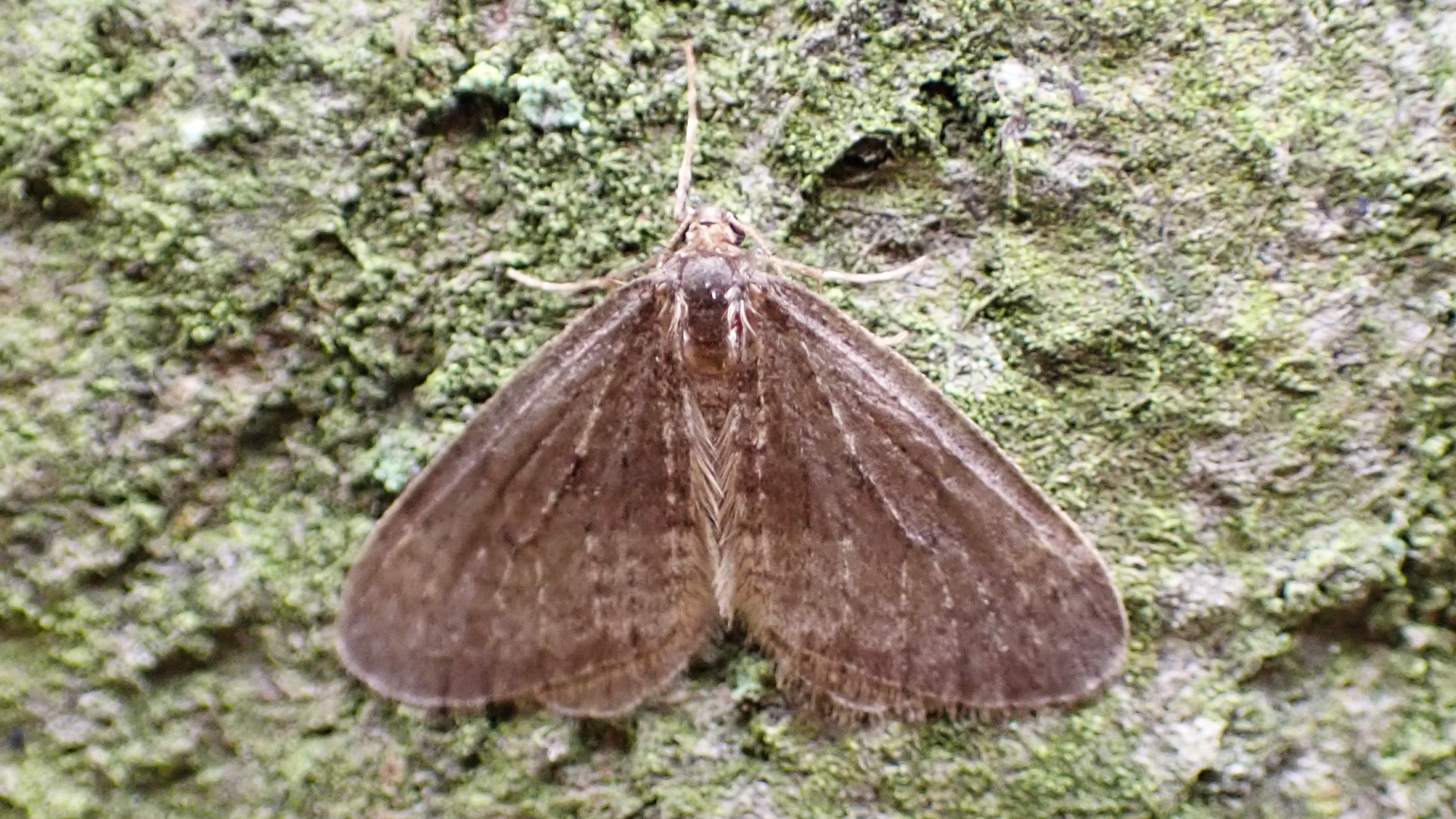
#
70.141
Double-striped Pug Gymnoscelis rufifasciata
Seen from March to September, this moth flies mainly at dusk and in hot sunshine. Found in a variety of habitats and its larvae feed on a wide range of plants.
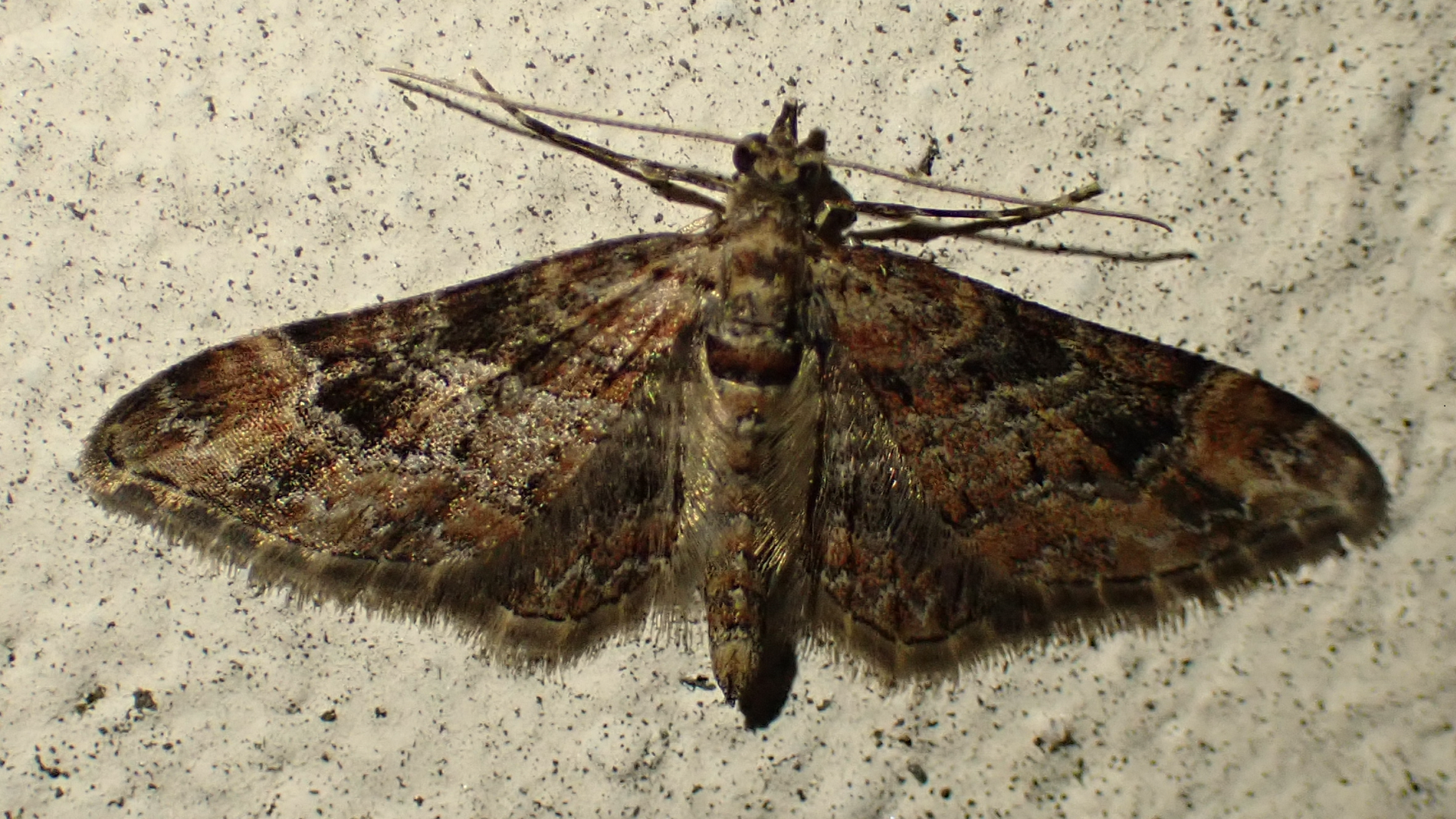
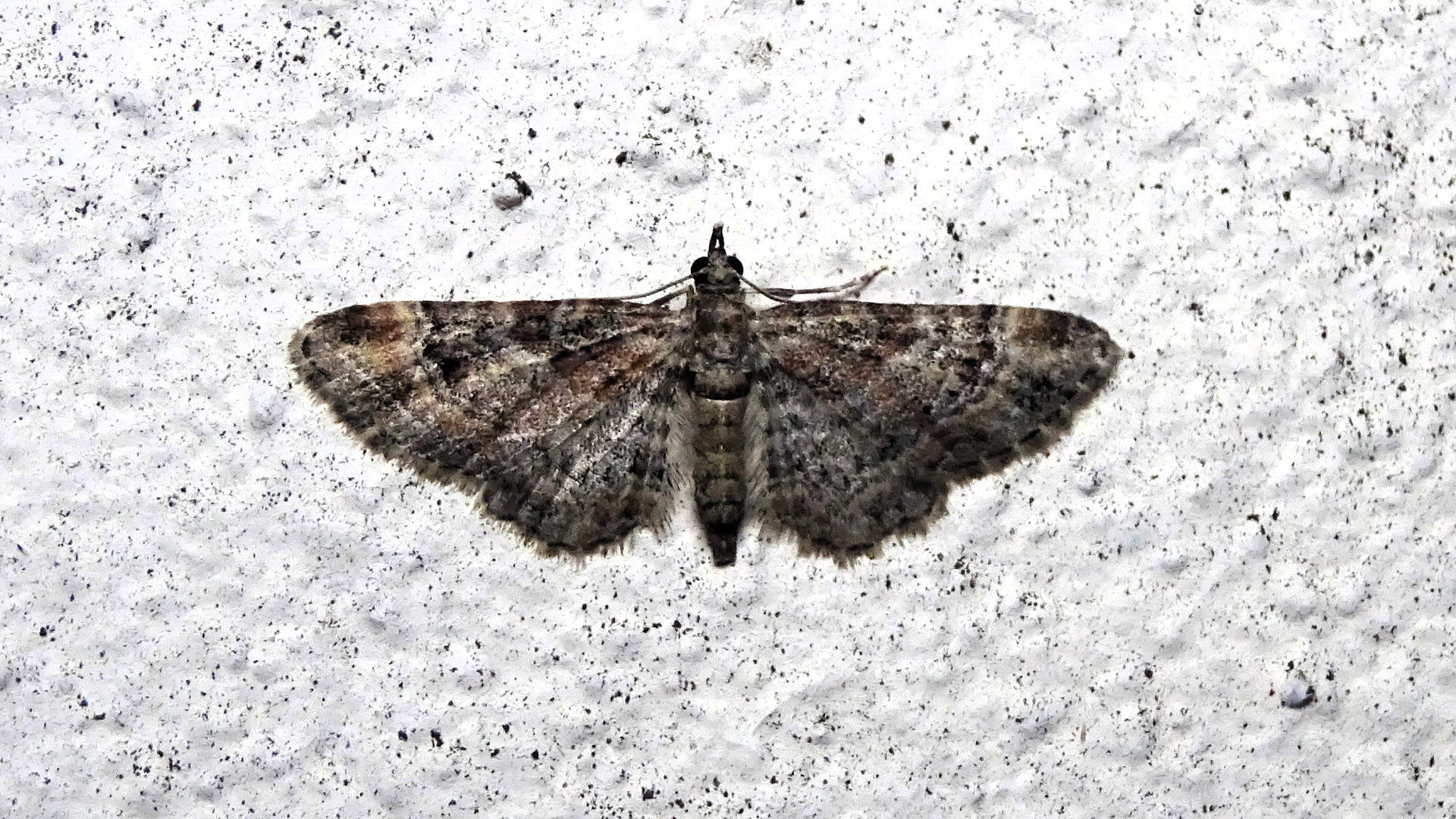
#
70.144
Green Pug Pasiphila rectangulata
The Green Pug flies from June to August. It has variable colour, sometimes very dark forms and some that do not show any green. Larval foodplants include Apple, Pear, Hawthorn, Blackthorn and Cherry.
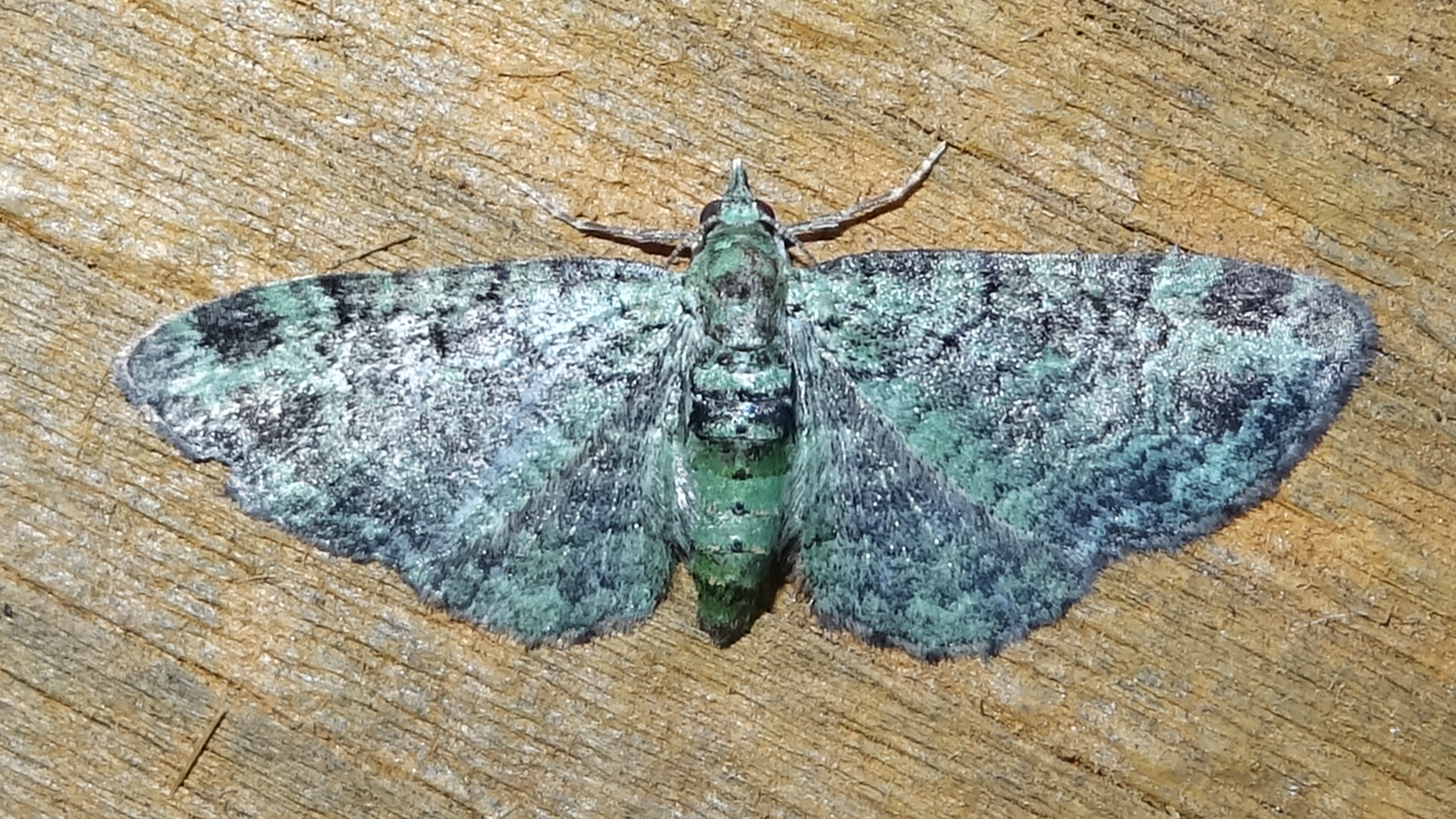
#
70.159
Cypress Pug Eupithecia phoeniceata
Cypress Pug arrived in this country by accident on garden conifers. Since the initial British record at Cornwall during 1959 it had now spread across most of southern England. August and September are peak flying months for this species.
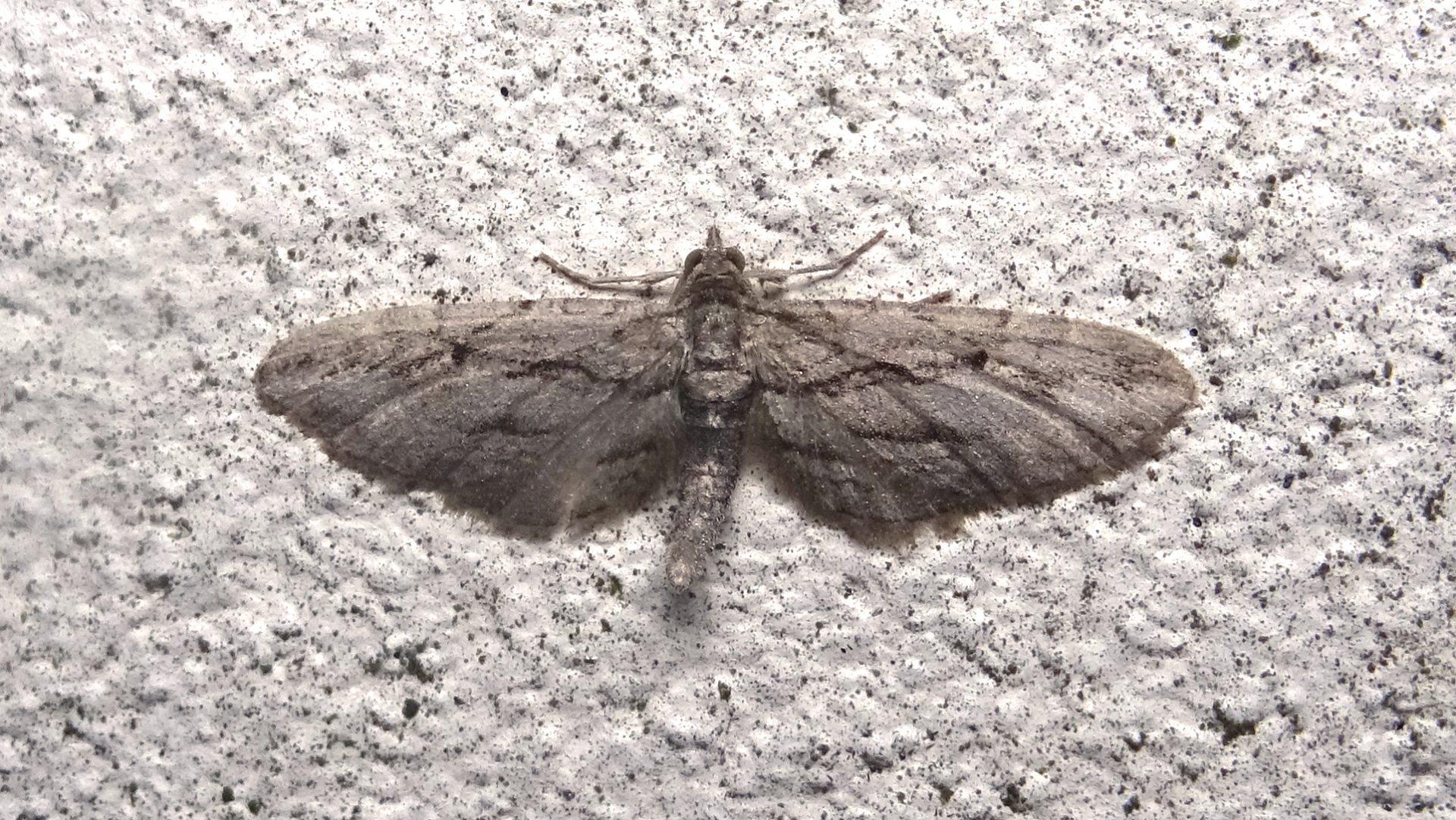
#
70.173
Lime-speck Pug Eupithecia centaureata
Flies from April to October in two broods. Its larvae feed on a wide range of plants.
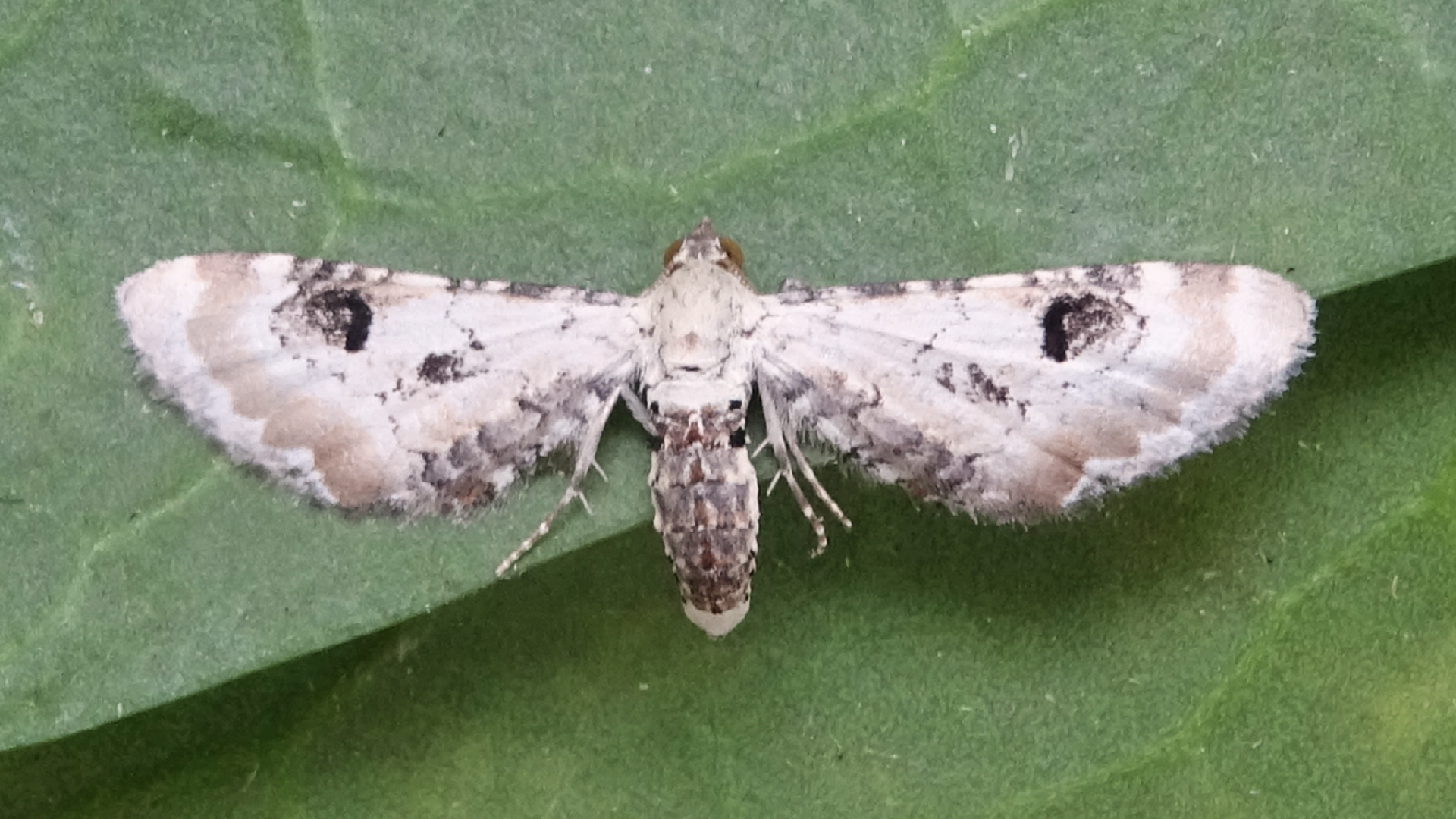

#
70.176
Freyer's Pug Eupithecia intricata
The Freyer's Pug flies in May and June. Its larvae feed on Cypress and Juniper.
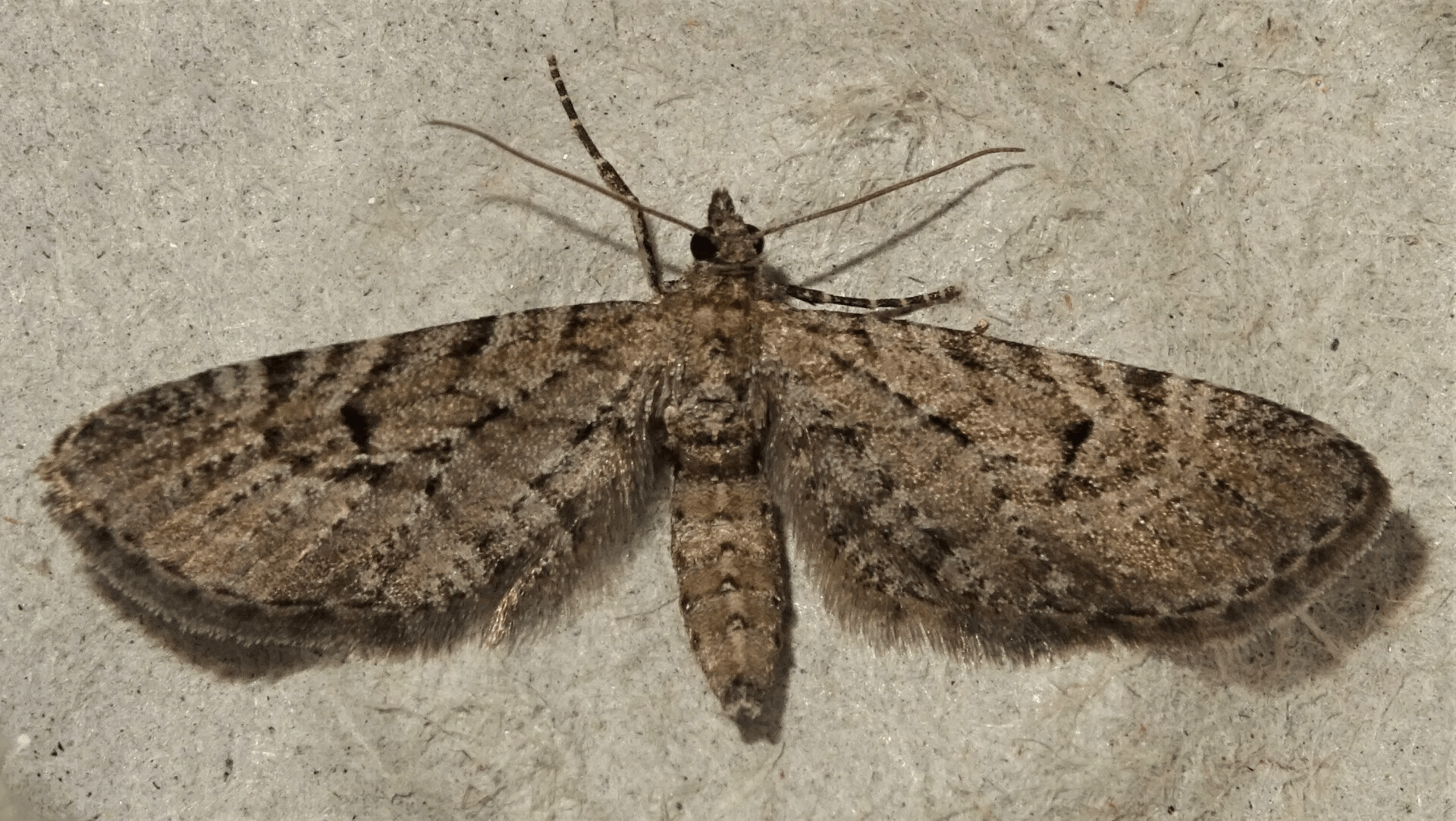
#
70.198
Seraphim Lobophora halterata
Flies in May and June. There are variations including banded forms. This species inhabits broad-leaved woodland. The larvae feed on Aspen and Black Poplar.
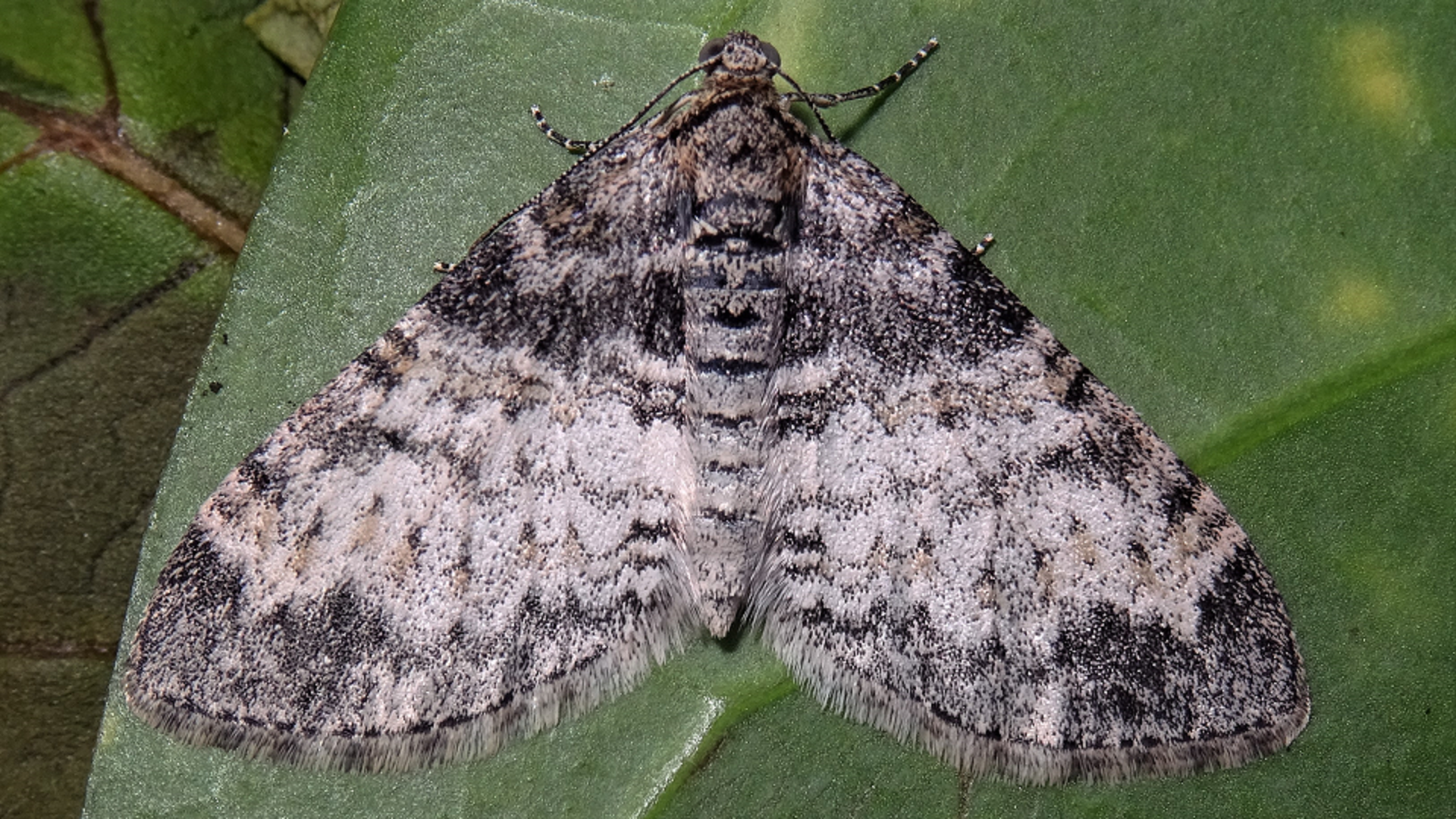
#
70.200
Yellow-barred Brindle Acasis viretata
Flies from May until September in two broods. Fresh specimens are green before fading to yellow. Its larvae feed on Holly, Ivy, Privet, Dogwood and Hawthorn.
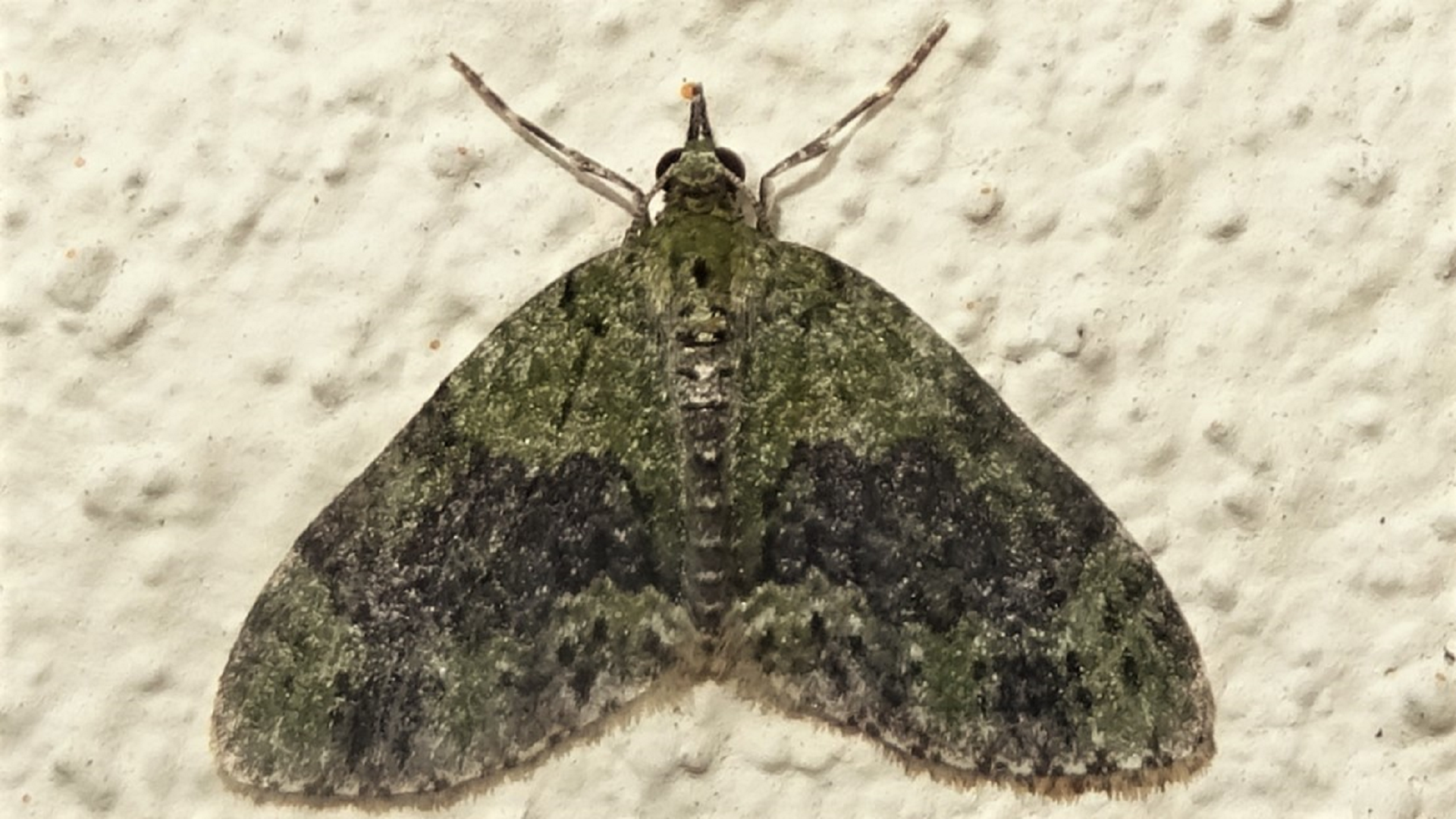
#
70.203
Orange Underwing Archiearis parthenias
Day-flying moth seen on sunny days in March and April. They tend to stay near the top of birch trees, but are sometimes seen lower down on gorse bushes. The Orange Underwing and Light Orange Underwing are two very similar species that can only be told apart by examining the hindwing underside.
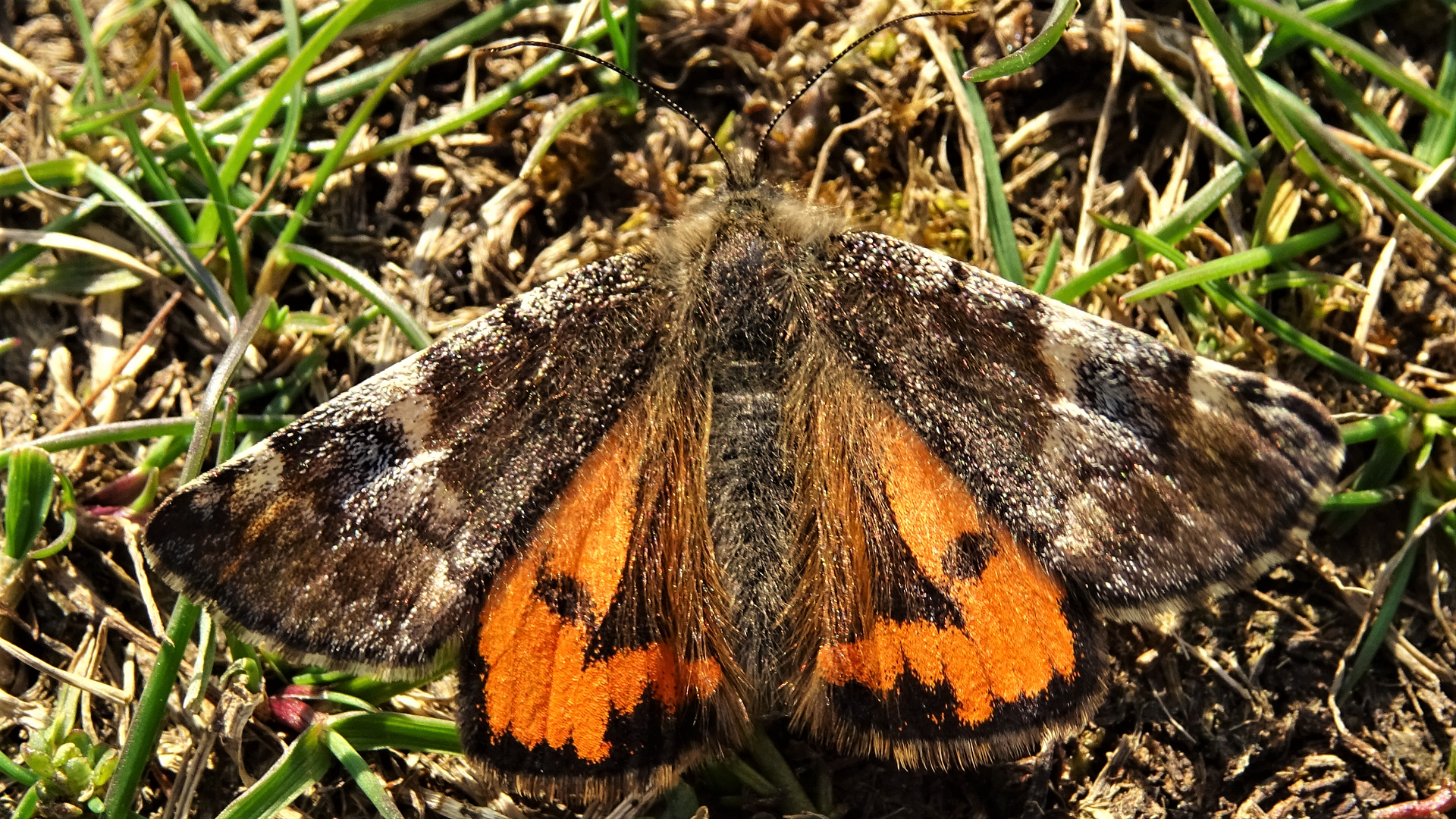
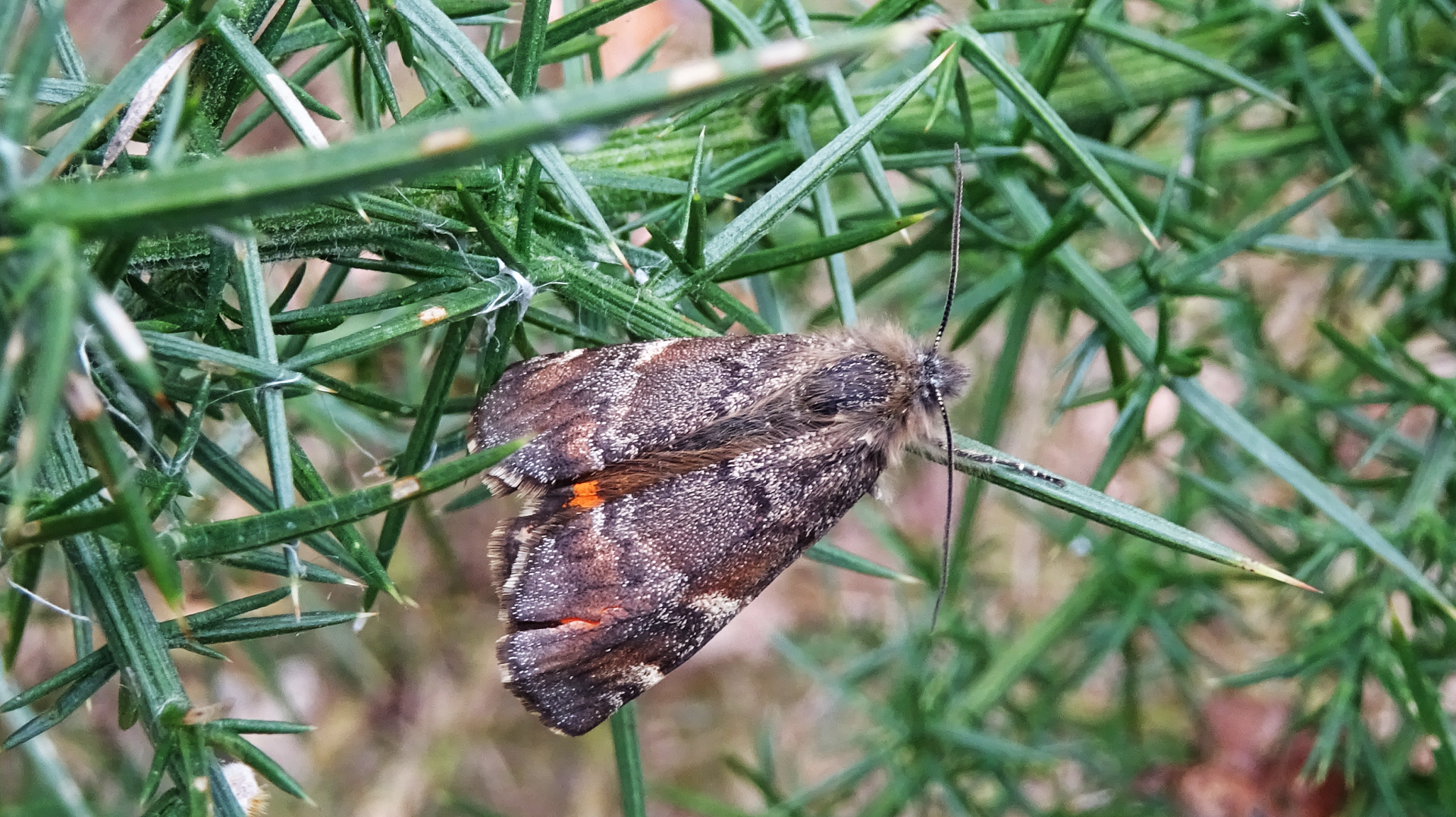
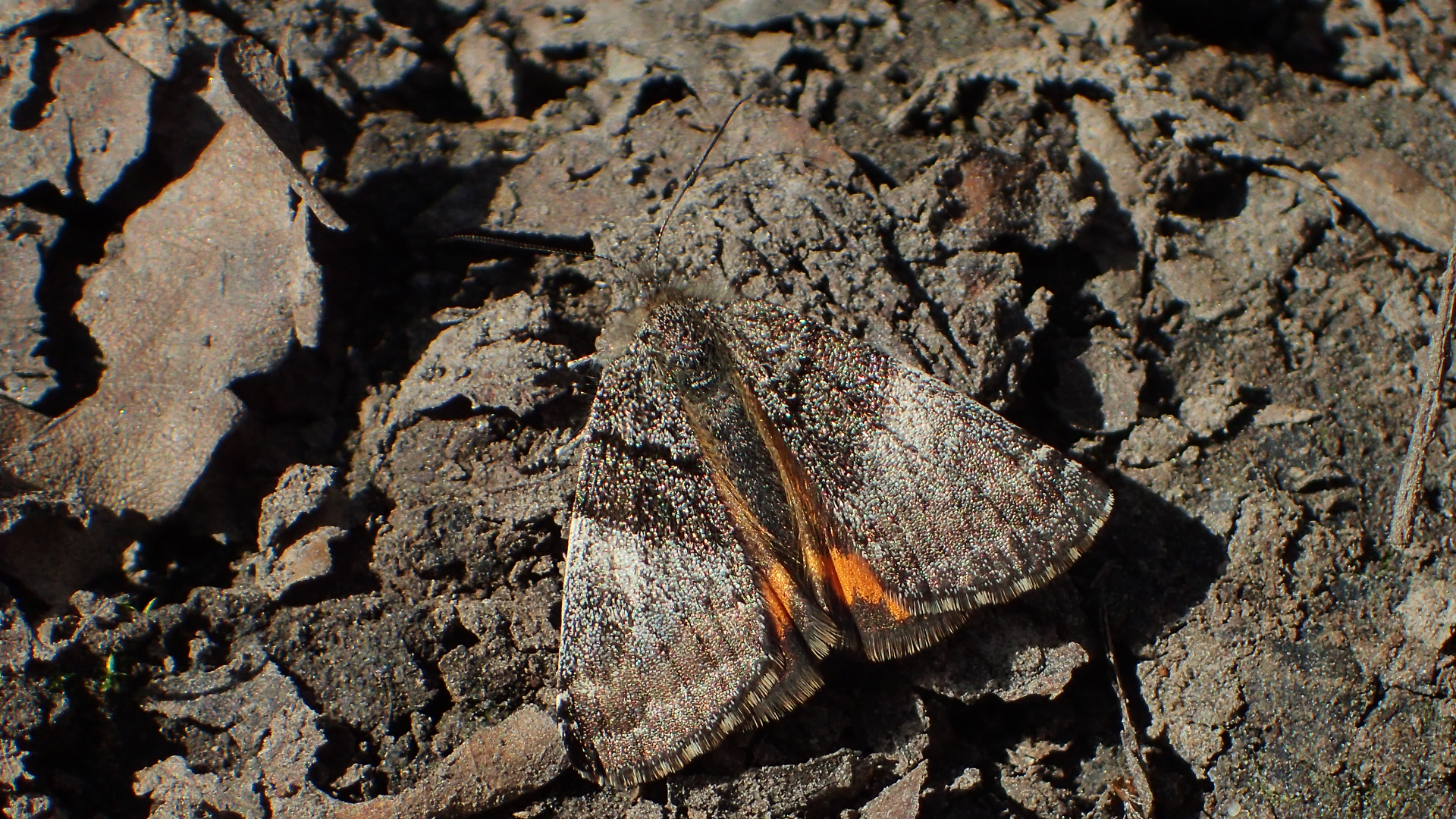
This moth was spotted on a path at the back of Hainault Lake. Although not able to check the hindwings, Simon thought this was Light Orange Underwing Archiearis notha, a view shared by Essex Field Club specialist Rob Smith, who suggested it was a very strong candidate for being a female based on markings and wing shape.
#
© hainaultforest.net. All rights reserved.


